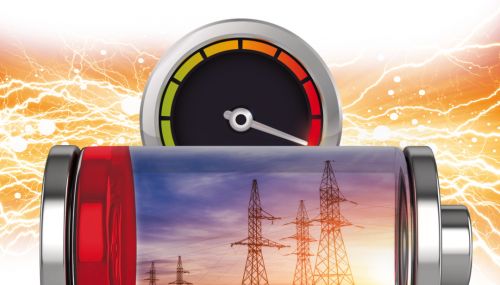All
Dealers See Small Changes as LIHEAP Season Begins
by John MacKenna

The U.S. Department of Health and Human Services (HHS) has released $3 billion in funding for the Low Income Home Energy Assistance Program (LIHEAP), and dealers in a few states are seeing minor tweaks to their programs.
Suppliers of Oilheat, Bioheat® fuel and propane have a complex relationship with the LIHEAP program, which is administered on a state-by-state basis. On the plus side, LIHEAP funding pays the cost of fuel deliveries for many customers with limited means. On the other hand, the fuel payments come with strings attached that include discount pricing requirements and red tape.
Burdensome Paperwork
In recent years, the dealers in Massachusetts have found themselves bogged down by cumbersome, intrusive filing requirements because state officials took a hard line against fraud in the program. The problem stemmed from a 2010 audit by the U.S. Government Accounting Office (GAO) that uncovered numerous instances of fraud. HHS reported to the states that it wanted stronger administration, and officials in Massachusetts developed unique review procedures that proved very time-consuming for dealers.
The Massachusetts Energy Marketers Association (MEMA) worked with the New England Fuel Institute (NEFI) to seek relief, and the associations are optimistic that the procedures will be improved for Fiscal Year 2016. Republican Charlie Baker has succeeded Democrat Deval Patrick as governor, and MEMA President Michael Ferrante is expecting a more reasoned approach at the Department of Housing and Community Development. “We are eager to work with them, and there is indication of a much greater sense of cooperation,” he said.
NEFI Director of Public Policy and Industry Relations Michael C. Trunzo said he expects to continue discussions with HHS officials on how to streamline the program and improve administration. NEFI is also looking to dissuade the agency from pursuing an initiative announced earlier this year to use LIHEAP funds to subsidize fuel conversions.
Ferrante said the LIHEAP season got off to a slow start in Massachusetts due to lingering warm weather. Massachusetts dealers are reimbursed for LIHEAP with a $.50 margin over rack.
In Connecticut, dealers are also reimbursed with a margin-over-rack payment that varies by county. The Connecticut Energy Marketers Association (CEMA) worked with the state to secure an increase in the margin rate for the second time in two years. “We got it bumped up, but it still woefully short,” said CEMA President Chris Herb. The state also agreed to switch the index price to OPIS Ultra Low Sulfur Diesel instead of No. 2 heating oil.
In Maine, the state has allocated a larger share of LIHEAP funds to weatherization – a move that was supported by the Maine Energy Marketers Association (MEMA). “It makes sense to have the LIHEAP customers reduce their usage,” said MEMA President Jamie Py.
MEMA officials expect to meet with the Maine State Housing Authority early next year to review the LIHEAP reimbursement rate. Dealers currently provide a 7-cent discount on all gallons they sell to LIHEAP customers, including gallons purchased without LIHEAP funds. This rule can prove problematic for a dealer. If they take a customer on without knowing they will receive LIHEAP, they might have to pay a retroactive $.07 refund on every gallon. While that system can be a bureaucratic nightmare at times, the Housing Authority is overall a very good partner to the dealers, Py added.
EBT Cards
In Vermont, dealers are concerned that the state will replace its smooth running system with something far less convenient, according to Vermont Fuel Dealers Association Executive Director Matt Cota. Dealers now receive an allocation for each LIHEAP customer at the start of the heating season. They draw down against the balance until it is depleted, and they pay a refund to the state for any unused customer funds. The discount requirements that regulate pricing are not popular with dealers, but the advance allocations work well.
That convenience will be lost of the state enacts a pending proposal to disburse LIHEAP funds directly to the clients via EBT cards. Customers could not simply call a dealer to arrange a payment but would have to call a third party first to authorize the purchase. VFDA is concerned that the third-party requirement will cause run-outs any time a customer waits too long to arrange a payment. The Vermont LIHEAP program does not reimburse dealers for the cost involved in restarting a heating system, so LIHEAP participation will prove even more costly than it is already, Cota explained.
The state had earlier considered setting up an online portal for dealers to manage their LIHEAP accounts but has been forced to divert all its IT resources to setting up an exchange for the Affordable Care Act, so the dealer portal is on hold.
Vermont dealers are required to discount LIHEAP prices by one of three methods: a $.15 discount below retail price plus cash discount; pre-buy agreement; or margin over rack. Most dealers choose the 50-cent margin over rack, which uses an daily average price calculated by the state using rack prices in Burlington, Albany, NY, Springfield, MA and Portsmouth, NH.
Vermont also supplements its federal LIHEAP funding with a state allocation to the Fuel Assistance program.
Related Posts
 Redefining Zero
Redefining Zero
Posted on April 17, 2024
 RINs and Repeat
RINs and Repeat
Posted on March 12, 2024
 ISO NE – Not Ready for Prime Time?
ISO NE – Not Ready for Prime Time?
Posted on March 11, 2024
 U.S. DOE Releases Home Energy Rebate Guidance
U.S. DOE Releases Home Energy Rebate Guidance
Posted on September 14, 2023
Enter your email to receive important news and article updates.
